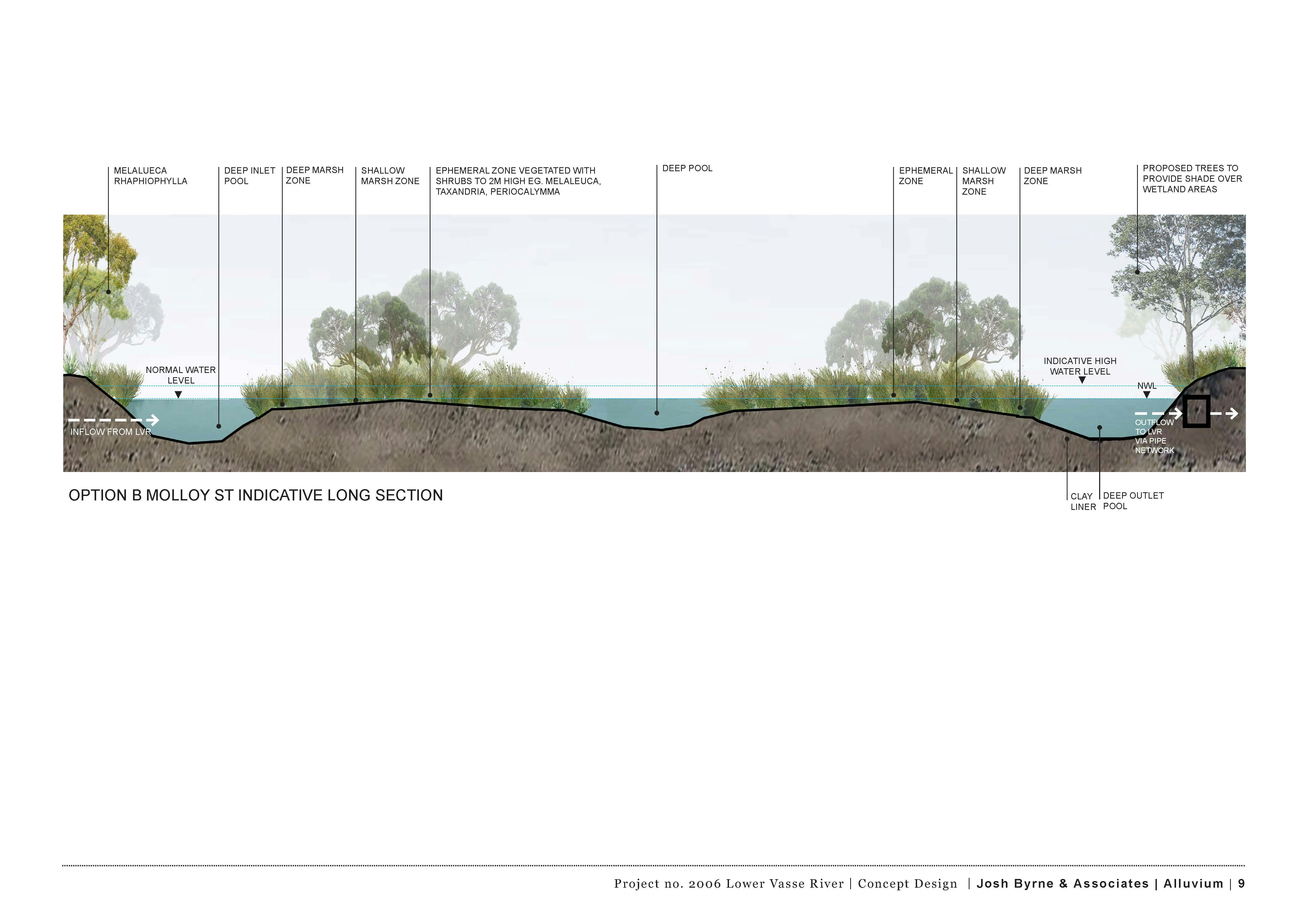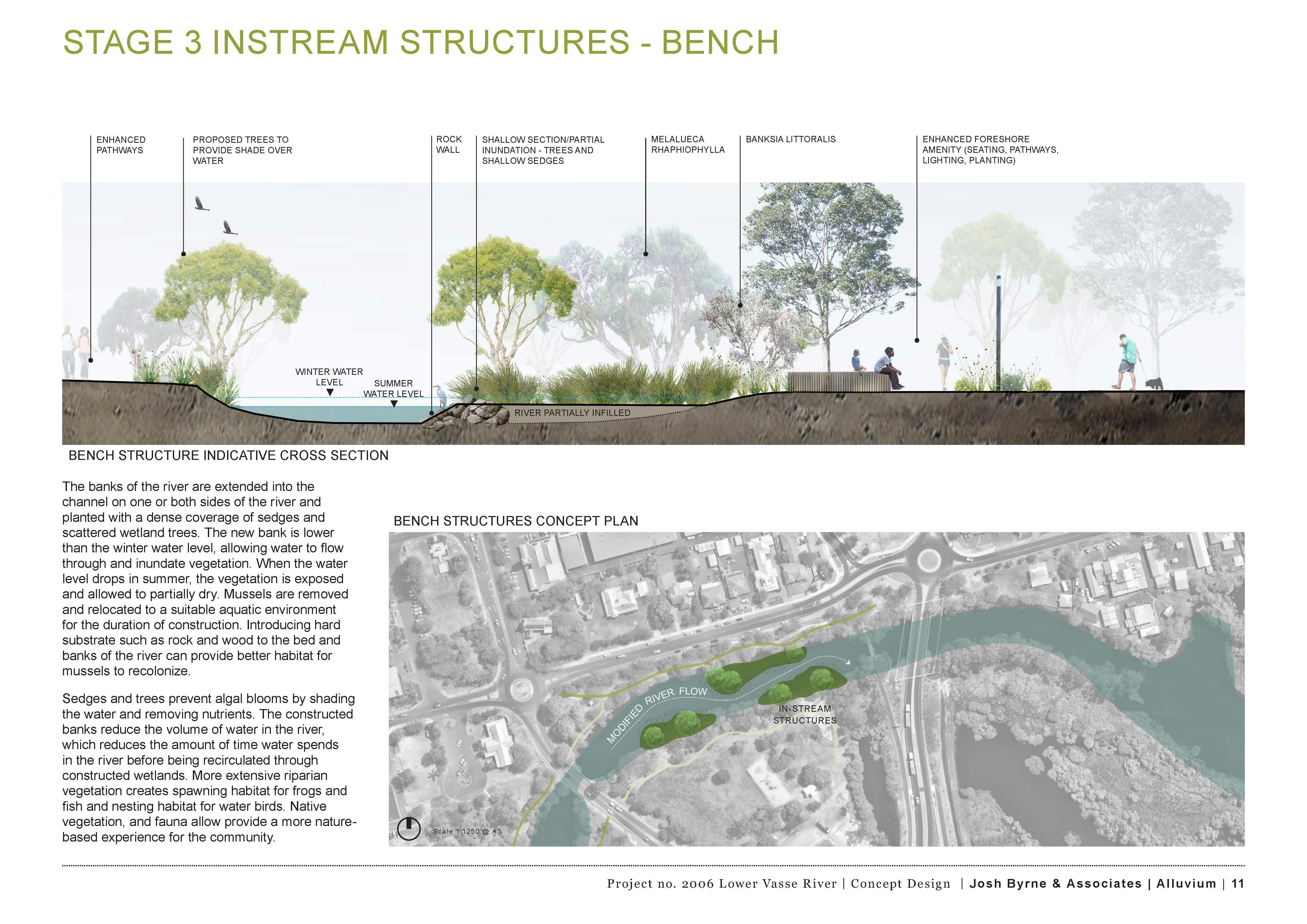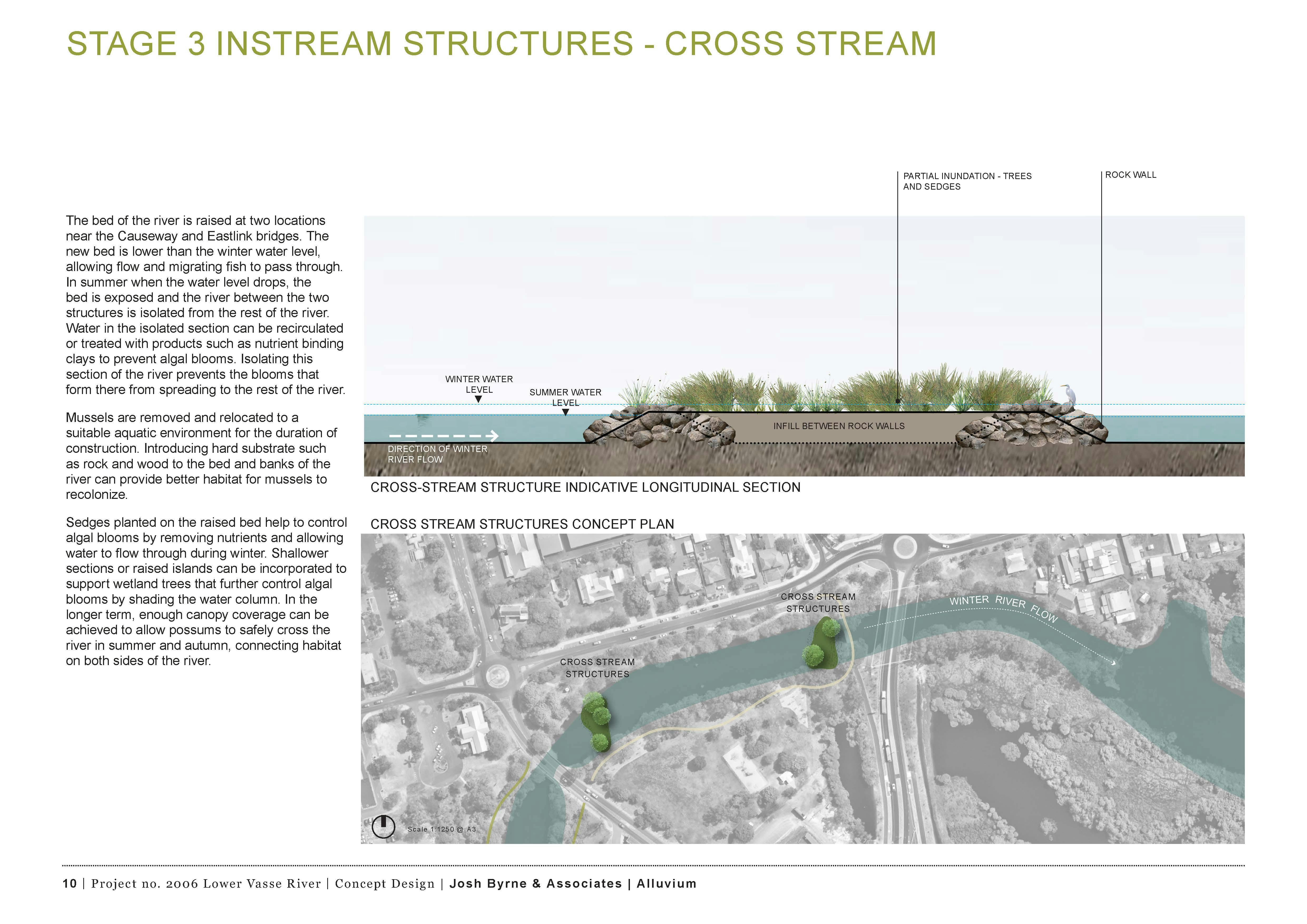Update 2 July 2021
The City of Busselton is progressing plans to commence the removal of sediment from the Lower Vasse River, with the aim of improving water quality. While still seeking funding and environmental approvals to remove sediment in the area either side of the Causeway and Eastern Link Bridges, works are still on track to commence in January 2022. The key reason these areas have been identified as the first stage is because they are the areas where the highest volume of sediment is present and is where algal blooms often first appear. While having agreed to act as the lead agency, the City will not be able to fix the river on its own. State Government continues to have primary responsibility for the Lower Vasse River and we will continue to need the support of State Government to solve what are very complex issues.
Update 3rd March 2021
Implementation of the Lower Vasse River Management Plan is entering the next step with detailed designs for the creation of a living stream now being prepared.
These designs, which are being developed by Alluvium Consulting, provide a multi-staged approach to reducing blue-green algal blooms in the river.
Stage 1 of the Living Stream concept design involves the removal of sediments in the river. The build up of sediments in the river is a key source of nutrients that contributes to algal blooms. Sediment removal has received high community support in consultation undertaken by the City and was recently selected as a priority by the Lower Vasse River Management Advisory Group.
The City is applying for external funding and progressing environmental approvals to undertake sediment removal. Subject to funding, environmental approval and ongoing consultation with local Aboriginal people, sediment removal is scheduled to start next summer.
We thank those who have taken time to join in the discussion forum on this page over the last few months. Further consultation with the Lower Vasse River Management Advisory Group, Council and the community will take place later this year after draft detailed design plans are completed. |
Living Streams design for Lower Vasse River
As part of the next stage of implementation of the Lower Vasse River Waterway Management Plan
The City has engaged Alluvium Consulting Australia Pty Ltd to design to develop Living Stream designs for the Lower Vasse River. The intention behind this approach is to create conditions less favourable to algal blooms in the river. This may involve removing sediment, revegetation works, changes to the river’s shape and the creation of a diversity of habitats. Water treatment options may also considered.
The City will consult with the community during the project in order to:
- provide a summary of our understanding of the problem, the project’s objectives, and the potential interventions being considered.
- Understand community views for each of the project objectives
- Understand community views for each of the potential interventions
- Identify high priority areas within the study reach and surrounds
A Living Stream concept has been developed for the Lower Vasse River.
Subject to funding and further community consultation, a roadmap of interventions is proposed. Stage 1 involves sediment removal with initial focus on the area between Causeway Road and Eastern Link Bridge. Stage 2 will see construction of a wetland to treat and re-circulate water from the river. Additional stages may involve the construction of in-stream structures to reduce the volume of water to be treated or the enhancement of an existing drainage basin near Rotary Park. The indicative time frame for these works would rely on community support and would depend on securing approvals and funding, but could see works started as early as November 2021.
The draft concept design is available for viewing here
Tell us what you think of the proposed works using the forum below.

Previous Consultations and Updates:
In 2019, the City of Busselton, as part of the Revitalising Geographe Waterways program and in close consultation with the community and stakeholders, prepared Waterway Management Plans to guide future management of the Lower Vasse River and Toby Inlet. The Waterway Management Plans are available for viewing in the document library.

The Waterway Management Plans for the Lower Vasse River and Toby Inlet were adopted by Council on 22 May 2019 and will guide future management actions to improve water quality, ecological health and community enjoyment of these local waterways. Actions of the Waterway Management Plans will be implemented as resources and funding permit.
Update 2 July 2021
The City of Busselton is progressing plans to commence the removal of sediment from the Lower Vasse River, with the aim of improving water quality. While still seeking funding and environmental approvals to remove sediment in the area either side of the Causeway and Eastern Link Bridges, works are still on track to commence in January 2022. The key reason these areas have been identified as the first stage is because they are the areas where the highest volume of sediment is present and is where algal blooms often first appear. While having agreed to act as the lead agency, the City will not be able to fix the river on its own. State Government continues to have primary responsibility for the Lower Vasse River and we will continue to need the support of State Government to solve what are very complex issues.
Update 3rd March 2021
Implementation of the Lower Vasse River Management Plan is entering the next step with detailed designs for the creation of a living stream now being prepared.
These designs, which are being developed by Alluvium Consulting, provide a multi-staged approach to reducing blue-green algal blooms in the river.
Stage 1 of the Living Stream concept design involves the removal of sediments in the river. The build up of sediments in the river is a key source of nutrients that contributes to algal blooms. Sediment removal has received high community support in consultation undertaken by the City and was recently selected as a priority by the Lower Vasse River Management Advisory Group.
The City is applying for external funding and progressing environmental approvals to undertake sediment removal. Subject to funding, environmental approval and ongoing consultation with local Aboriginal people, sediment removal is scheduled to start next summer.
We thank those who have taken time to join in the discussion forum on this page over the last few months. Further consultation with the Lower Vasse River Management Advisory Group, Council and the community will take place later this year after draft detailed design plans are completed. |
Living Streams design for Lower Vasse River
As part of the next stage of implementation of the Lower Vasse River Waterway Management Plan
The City has engaged Alluvium Consulting Australia Pty Ltd to design to develop Living Stream designs for the Lower Vasse River. The intention behind this approach is to create conditions less favourable to algal blooms in the river. This may involve removing sediment, revegetation works, changes to the river’s shape and the creation of a diversity of habitats. Water treatment options may also considered.
The City will consult with the community during the project in order to:
- provide a summary of our understanding of the problem, the project’s objectives, and the potential interventions being considered.
- Understand community views for each of the project objectives
- Understand community views for each of the potential interventions
- Identify high priority areas within the study reach and surrounds
A Living Stream concept has been developed for the Lower Vasse River.
Subject to funding and further community consultation, a roadmap of interventions is proposed. Stage 1 involves sediment removal with initial focus on the area between Causeway Road and Eastern Link Bridge. Stage 2 will see construction of a wetland to treat and re-circulate water from the river. Additional stages may involve the construction of in-stream structures to reduce the volume of water to be treated or the enhancement of an existing drainage basin near Rotary Park. The indicative time frame for these works would rely on community support and would depend on securing approvals and funding, but could see works started as early as November 2021.
The draft concept design is available for viewing here
Tell us what you think of the proposed works using the forum below.

Previous Consultations and Updates:
In 2019, the City of Busselton, as part of the Revitalising Geographe Waterways program and in close consultation with the community and stakeholders, prepared Waterway Management Plans to guide future management of the Lower Vasse River and Toby Inlet. The Waterway Management Plans are available for viewing in the document library.

The Waterway Management Plans for the Lower Vasse River and Toby Inlet were adopted by Council on 22 May 2019 and will guide future management actions to improve water quality, ecological health and community enjoyment of these local waterways. Actions of the Waterway Management Plans will be implemented as resources and funding permit.










